Surds Worksheets
Add and Subtract Surds
Year groups: 10, 11

Expanding Double Brackets with Surds - Using the Grid Method
Year groups: 10, 11
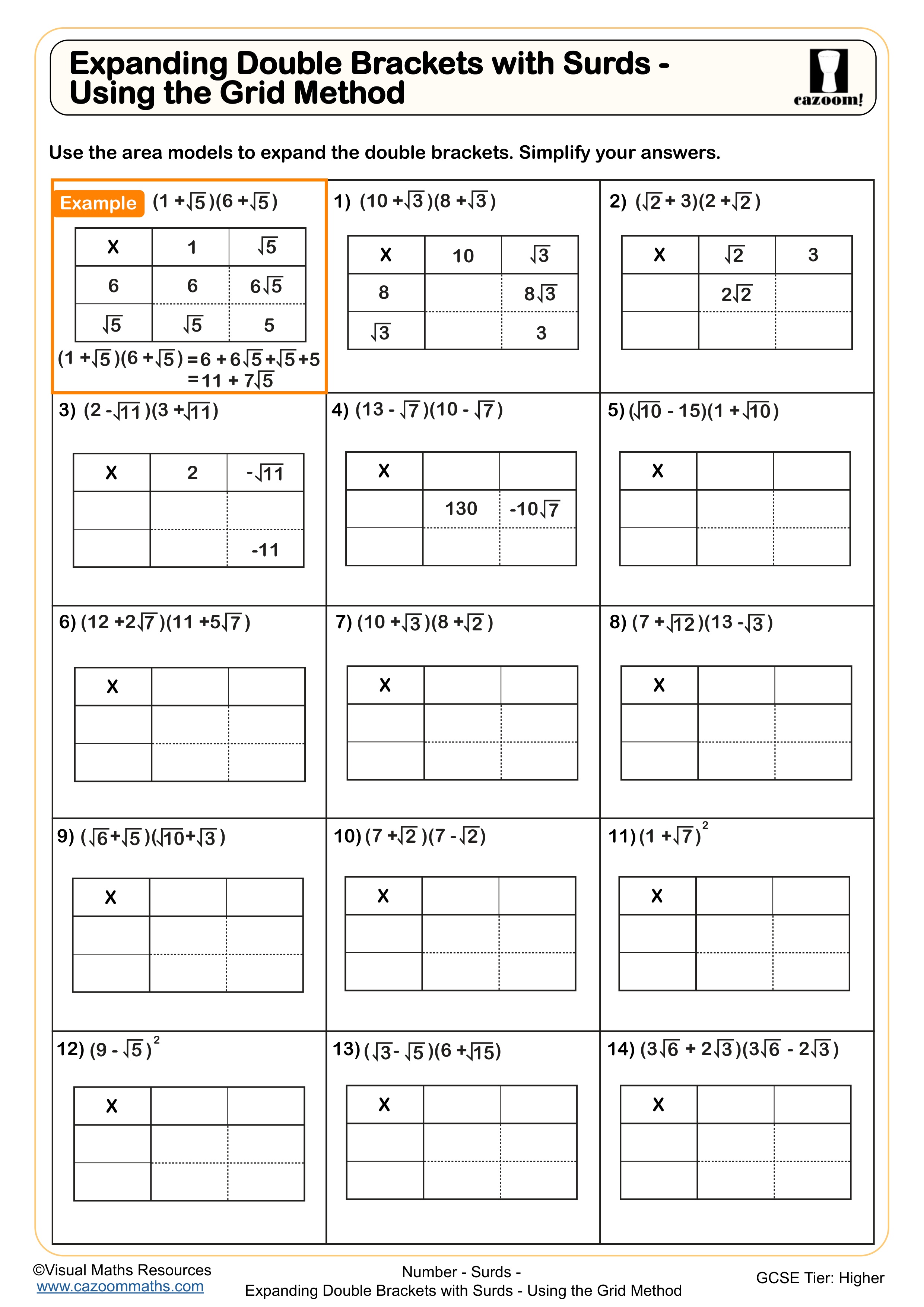
Pythagoras with Surds
Year groups: 10, 11
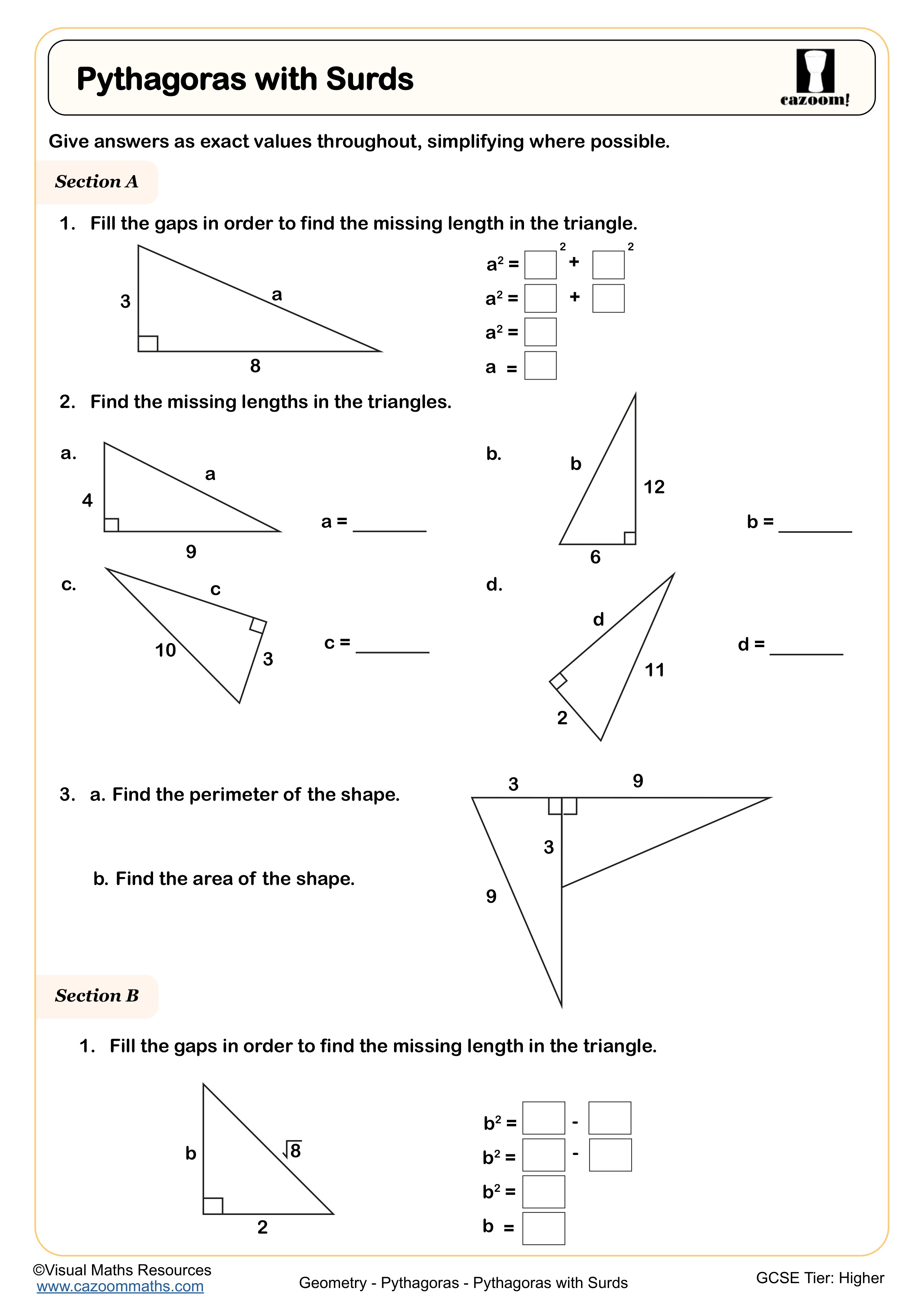
Rationalising Surds (D)
Year groups: 10, 11
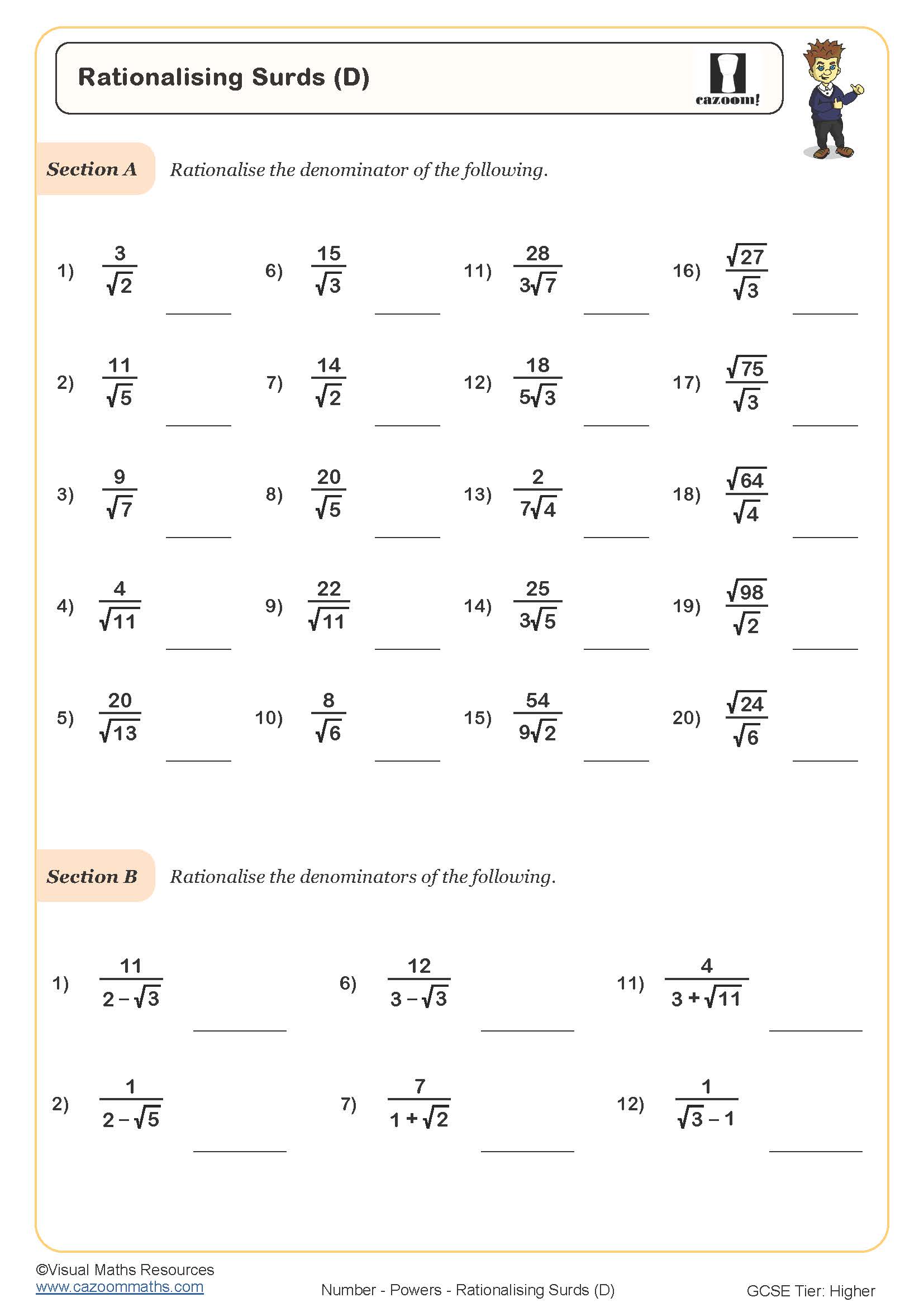
Rationalising the Denominator - First Steps
Year groups: 10, 11

Rationalising the Denominator - with Binomial Denominators
Year groups: 10, 11
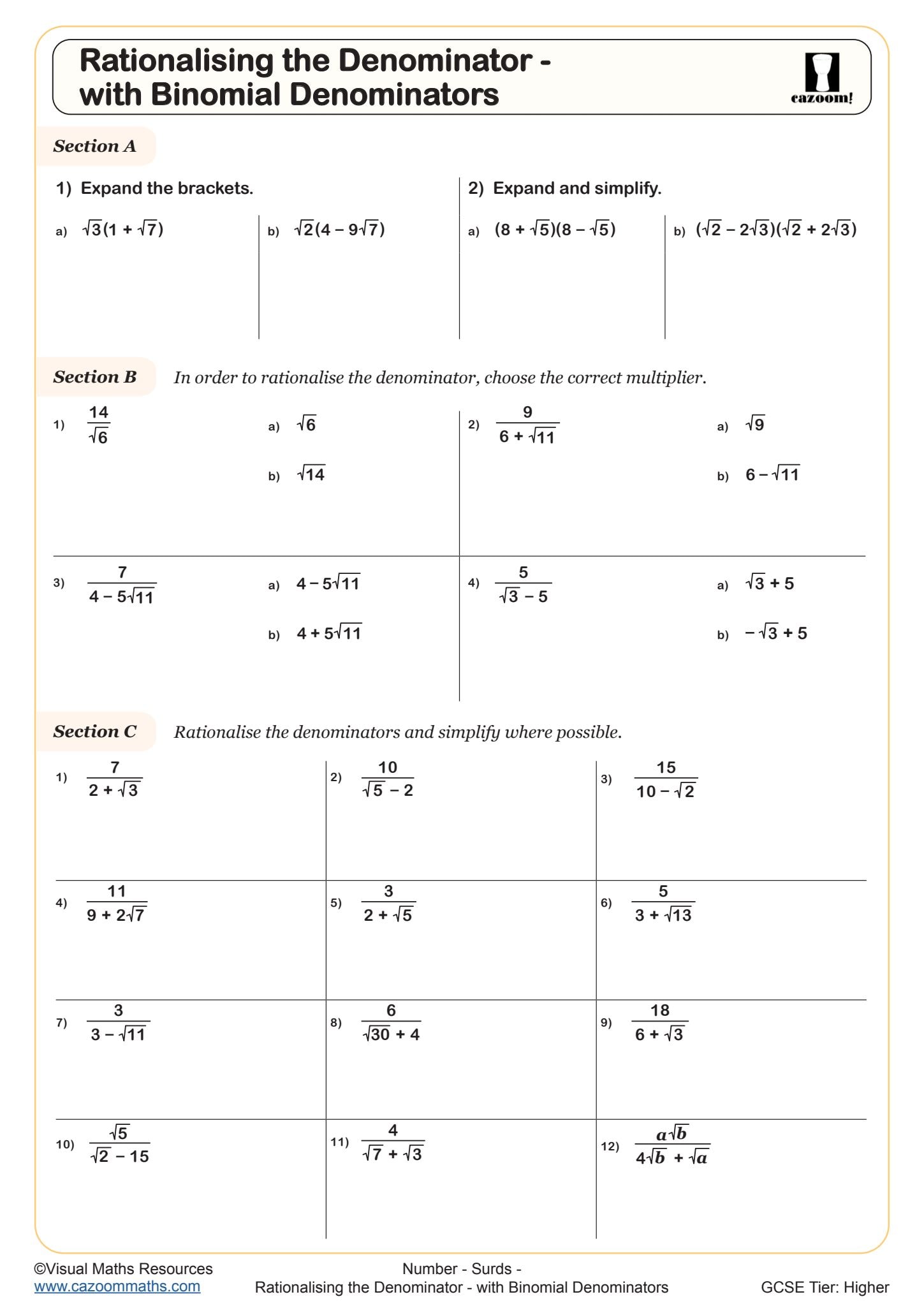
Rationalising the Denominator - with Binomial Numerators
Year groups: 10, 11
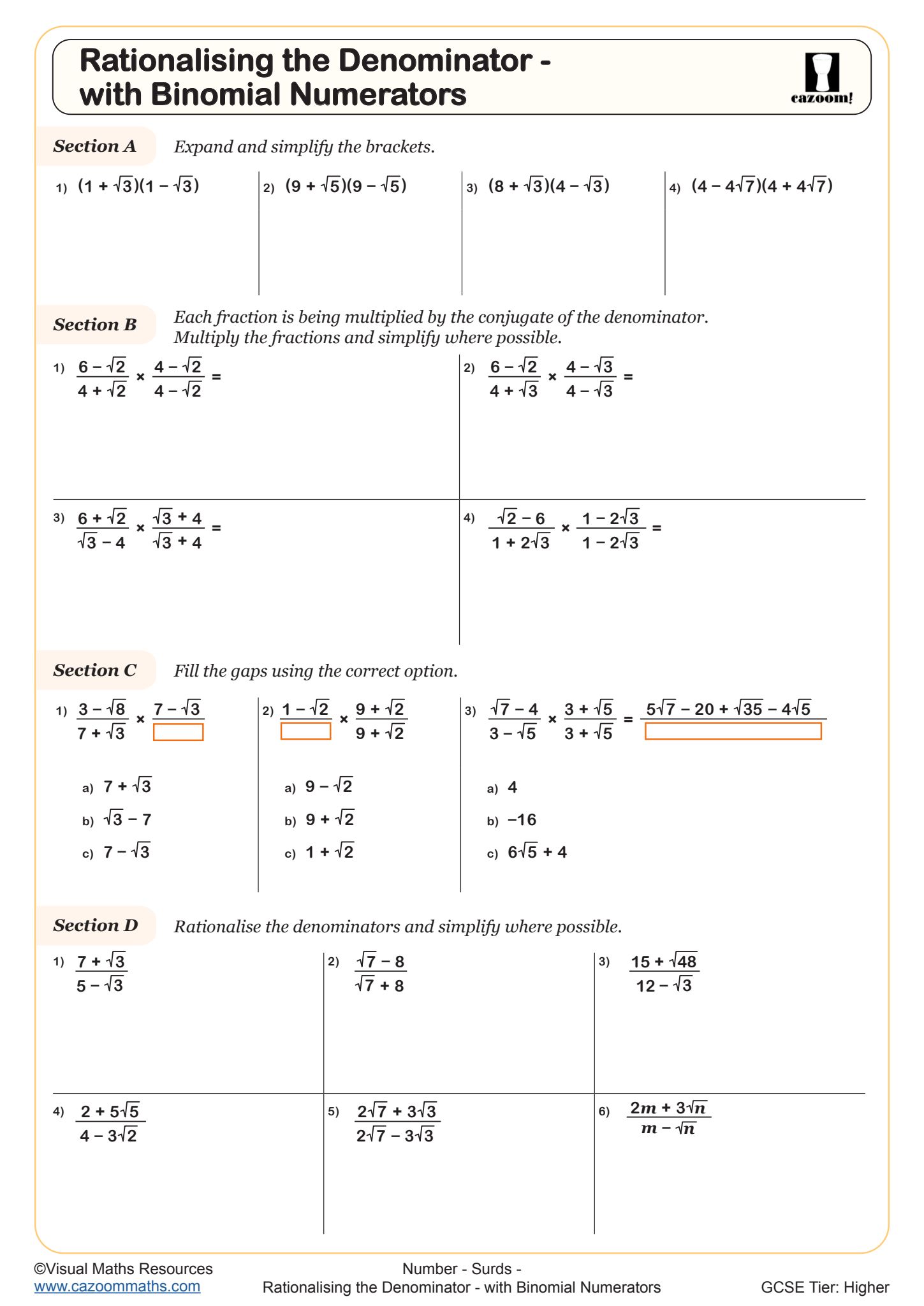
Simplifying Surds (A)
Year groups: 10, 11

Simplifying Surds (B)
Year groups: 10, 11
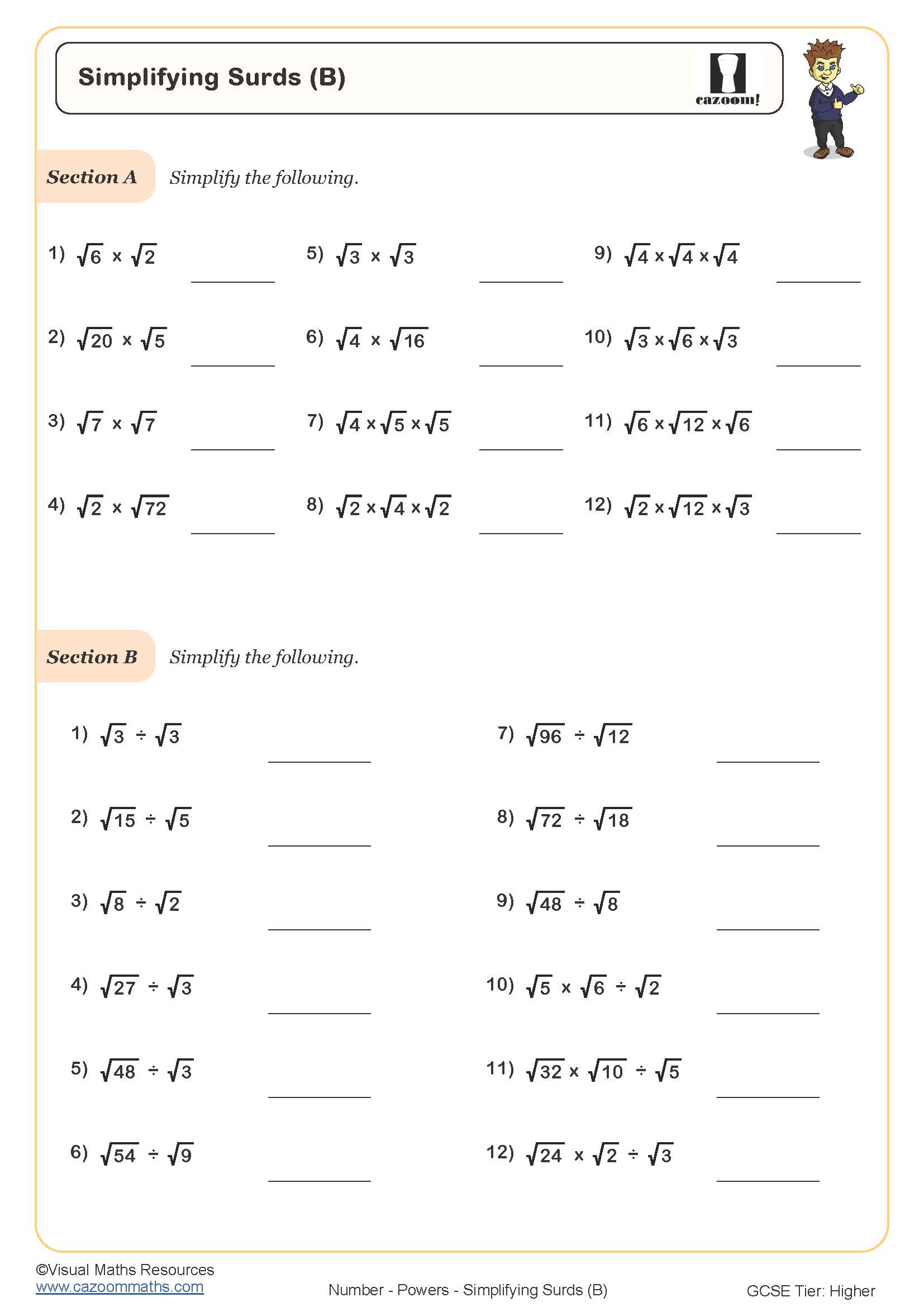
Simplifying Surds with Brackets (C)
Year groups: 10, 11
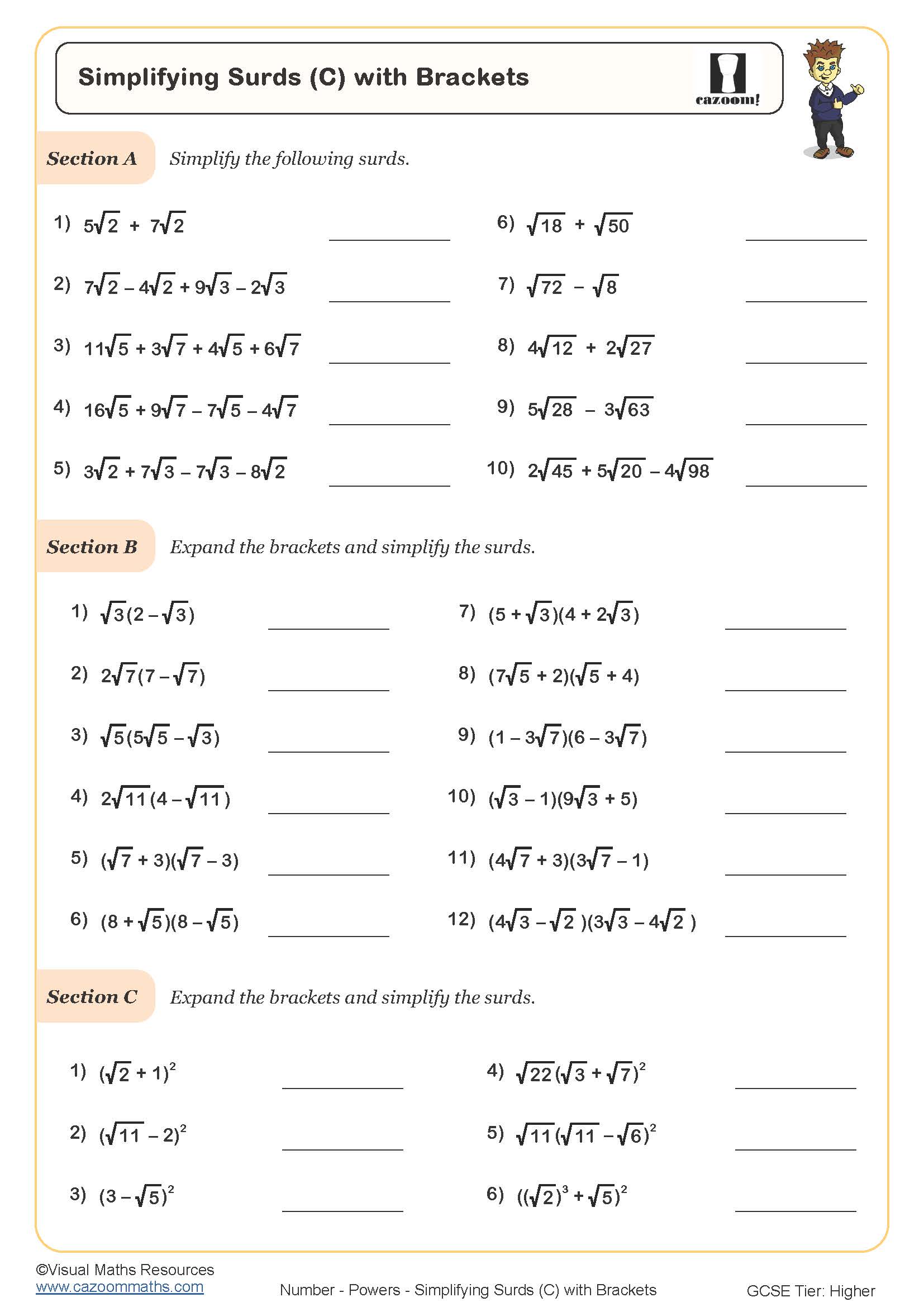
Writing Exact Answers Using Surds
Year groups: 10, 11
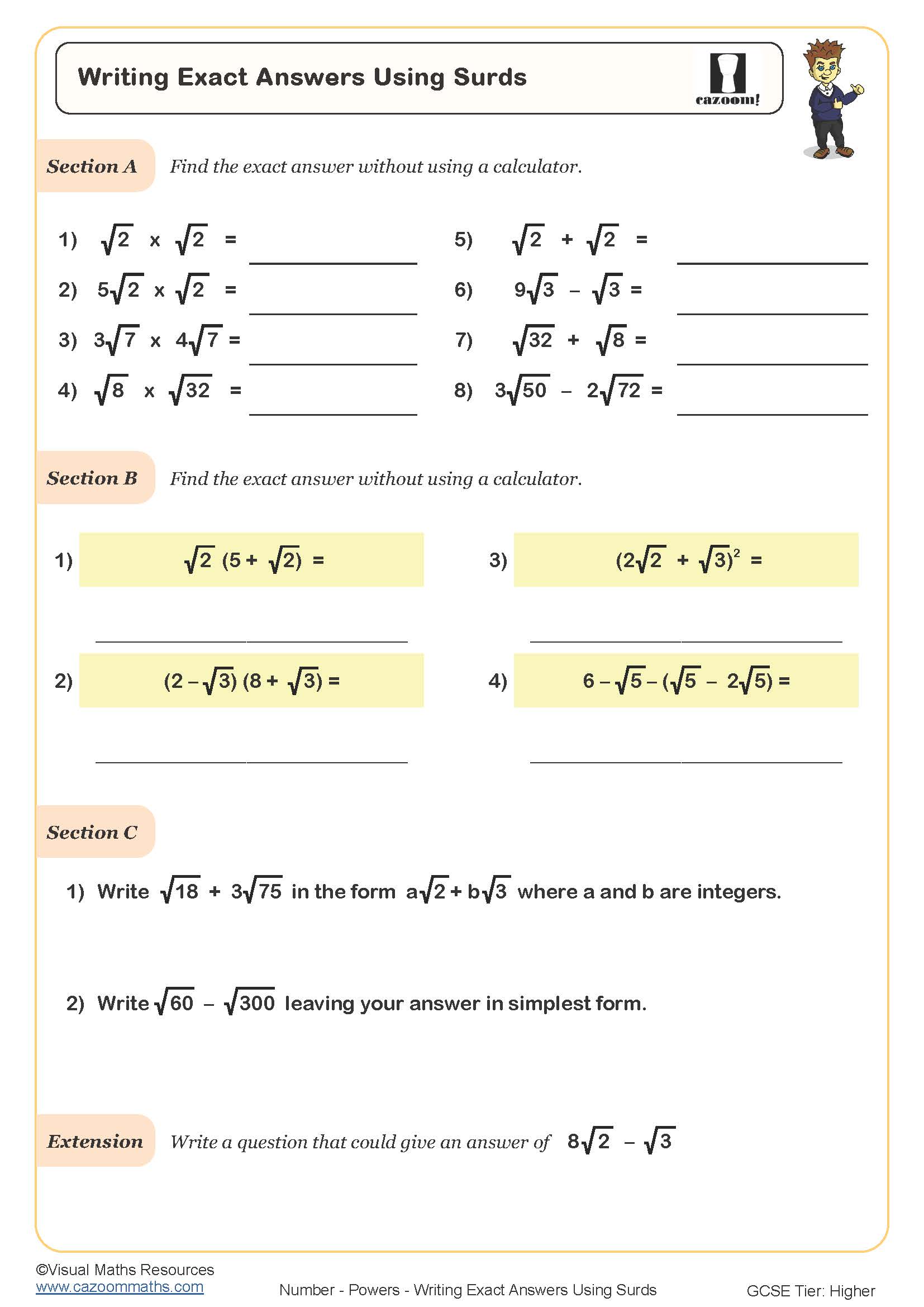
Printable Surds Worksheets with Answers
Download our printable PDF surds worksheets with separate answer sheets to support your students right away! These questions will help them in practising various surd operations, like—Add and Subtract Surds, Rationalising Surds, Simplifying Surds, Rationalising the Denominator and many more. Each of these worksheets is well-structured to guide your students through these core algebra concepts step by step. These worksheets are therefore suitable for both classroom use and independent study. These resources are proven to be a valuable addition to the GCSE algebra practice.
What Are Surds in Maths?
The basic idea of surds is irrational numbers that cannot be simplified to remove the square root (or cube root, etc.). Let’s take an example, √2 and √3 are surds because they cannot be expressed as exact decimals or fractions. Therefore, understanding this basic algebra concept is crucial for higher-level maths. Our surds worksheets are specially created by maths experts to provide comprehensive practice in identifying and working with surds, and using this concept while solving different maths problems.
Why Are Surds Important in GCSE Maths?
Surds are an important part of the GCSE maths curriculum, especially for higher-tier maths. Your children are expected to simplify surds, perform operations with them, and rationalise denominators in complex expressions in their KS3 and KS4 maths. By mastering this concept will therefore help your students in their algebra skills and is really important for solving advanced mathematical problems. Our GCSE surds worksheets offer targeted practice to help students develop skills like—Add and Subtract Surds, Rationalising Surds, Simplifying Surds, Rationalising the Denominator and many more.
Real-Life Applications of Surds
While surds are a mathematical concept, they have practical applications in various fields such as engineering, physics, and architecture, where precise calculations are necessary. For instance, surds are used in calculating exact lengths and areas that cannot be simplified into rational numbers. Understanding and working with surds enable students to apply mathematical principles to real-world problems. Our surds worksheets bridge the gap between theoretical knowledge and practical application, fostering a deeper appreciation of mathematics in everyday life.